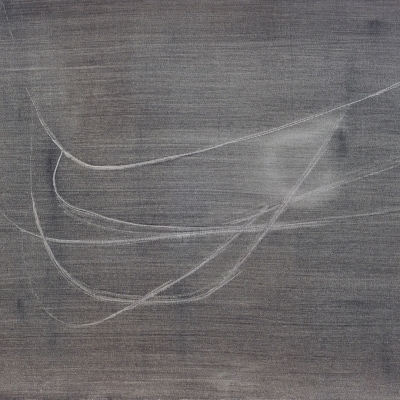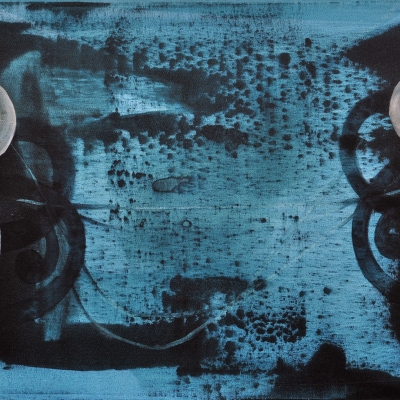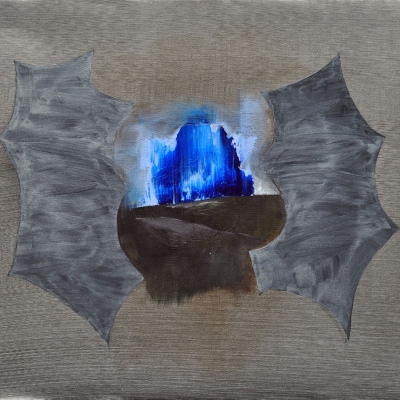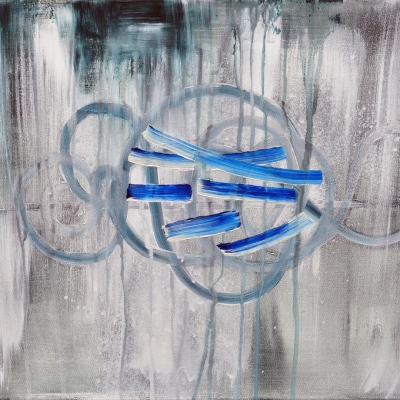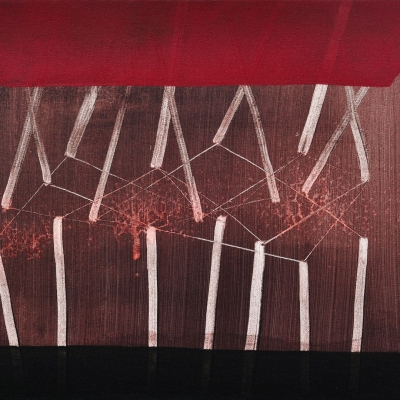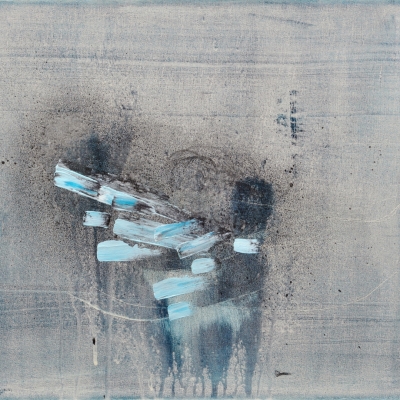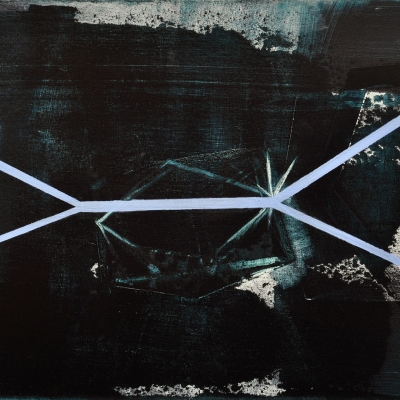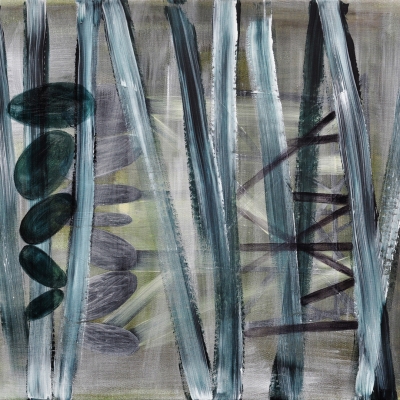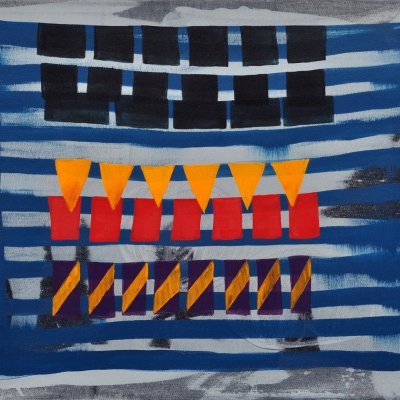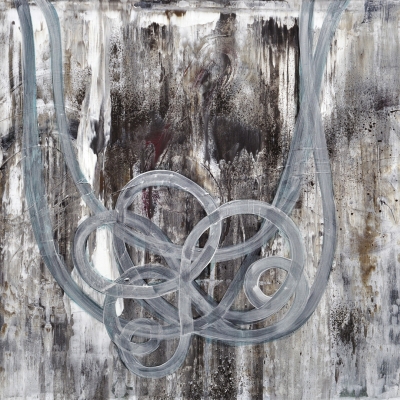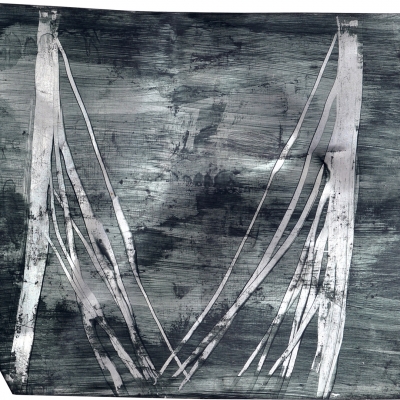Katrina Bello, in her new one-woman exhibit at West Gallery titled, painting into place impossible traces, explores the challenges of creating an image amid accelerated digitization processes. “As a painter and part of a category of artists who work in increments to build and construct our surfaces, the hyper-acceleration of other ways of image production is a challenge and an awakening for us in many ways: our approach to image making, our choice of media, consciousness of how the images hold the attention of viewers, and the relevance of painting as a practice.”
Bello adds she is not consciously doing something different, but in the course of her research and field observations, “I come across new texts and images that shed light on the work, and inform me in ways distinct from a previous series.” As she was observing botanical and organic forms in abandoned industrial spaces along the New Jersey turnpike for a previous exhibit, grid patterns, meshes, and intersections formed by unfinished architectural foundations caught her attention, leading her to study the history of imaging and to produce this new body of work currently on view at West Gallery.
Two distinct, untitled works cover the spectrum of Bello’s latest collection, which focuses on the urban environments of Newark, New Jersey, and Baltimore, Maryland. One, the first of the series, a 16 x 20 in. acrylic on canvas piece, “recalls the thinness and fleeting quality of grasses and spider webs, a recurring gesture in all of my works in the past 10 years.” It reflects her interest in formal occurrence shifts and re-translations from one context to another. “There is certainly something restricting, challenging, as well as liberating when one’s means of inquiry is reduced to the most basic and sufficient of formal elements,” she says. The other, the last of the series, an 18 x 24 in. work done in acrylic on gesso board, renders Bello’s resolution of the conflicts and conceptual oppositions she encountered on visceral impact, surface, presence, and intensity. “In this painting, I was attempting to create that visceral [effect], presence, and concentration, and, at the same time, maintaining the flatness and the all-at-once quality that is painting’s privilege above other media.”
“I choose painting because, of all media, it has the highest capacity for silence, muteness, and stillness. It also demands more engagement from both maker and the viewer,” explains Bello, hoping to find the balance between the conceptual and physical construction of her ideas.




